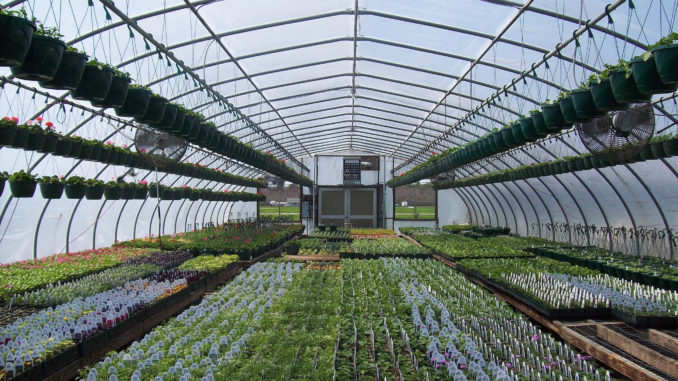
By Kathleen Miller
Gaia’s Farm & Gardens
Sustainable living, gardening and farming is based on an understanding of ecosystems, the study of relationships between organisms and their environment. It has been defined as an integrated system of plant and animal production practices that will last over time. Having a harmonious relationship with Gaia (Mother Earth) provides food for people enhances the natural environment upon which the community depends, makes efficient use of resources and integrates natural cycles that sustain economic viability as well as enhances the quality of life for the community as a whole.
Secrets of Sustainable Mulch
Mulching is making a much needed comeback. A blanket of organic mulch smothers weeds, preserves soil moisture, and adds organic matter to as it decomposes. Mulch insulates the soil, keeping the temperature even and helping the growth of plant roots. Mulch provides food and habitat for earthworms and burrowing insects, which help loosen and aerate the soil. Mulching also helps prevent erosion and prevents the rotting of fruit type vegetables such as melons by keeping them away from the moisture on the ground.
Mulch should be applied to the sustainable garden in the spring, after the soil has warmed up. The amount of mulch supplied depends on the nature of the material you are using. Loose, porous mulch such as straw should be 6-8 inches thick to keep sunlight from reaching weeds: denser materials such as sawdust need only to be 1 ½ to 2 inches thick. Weeds should be removed before applying mulch, even though a thick layer will smother them. When placing your mulch materials, be careful not to cover the seedlings that you planted.
It is best to turn the mulch under into the soil at the end of the growing season in your garden. A wide variety of materials can be used for mulch, ranging from hay and straw to woodchips and leaves. Some of the best mulches cost nothing. Lawn clippings and leaves are both excellent for example: both work not only as mulches but add nutrients and humus to the soil when turned into the soil.
Mulch is not entirely problem free. It may contain weed seeds and can also serve as a shelter for slugs, destructive insects and mice. Mulch must also be replenished from time to time, since it breaks down slowly. Mulch is one of the much effective and sustainable ways for saving labor, improving the condition of your soil and growing healthier and bigger plants in your sustainable garden.
Gaia’s Grow Tips
Mulching Materials
Sawdust: can be resourced from lumberyards and sawmills. Apply 1 ½ inch layer thick.
Pine Needles: cheap and plentiful in many areas. The resin makes them last long
Wood Chips: wood chips are durable and slow to decay. Apply 3-8 inches thick.
Lawn Clippings: don’t throw away lawn clippings but recycle into mulch. Apply 3-6 inches thick.
Compost: one of the best garden mulches. It supplies nutrients in addition to functioning as mulch. For the best effect compost should only be partially broken down: otherwise it may encourage, rather than discourage, the growth of weeds. Apply 3-6 inches thick.
Hay and straw: can be obtained from local farm stores or local farmers. Apply 6-8 inches thick
Leaves: abundant and easy to come and you can get additional leaves from your neighbors. Apply 4-6 inches thick.
Support Northern Colorado Journalism
Show your support for North Forty News by helping us produce more content. It's a kind and simple gesture that will help us continue to bring more content to you.
BONUS - Donors get a link in their receipt to sign up for our once-per-week instant text messaging alert. Get your e-copy of North Forty News the moment it is released!
Click to Donate
